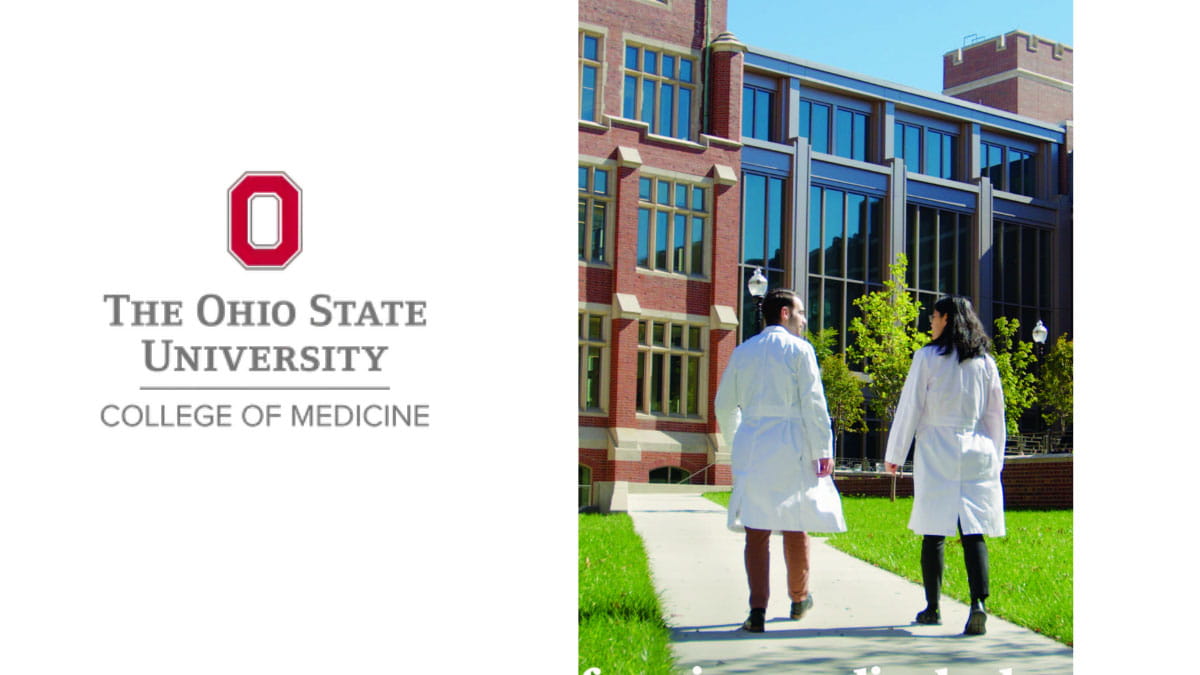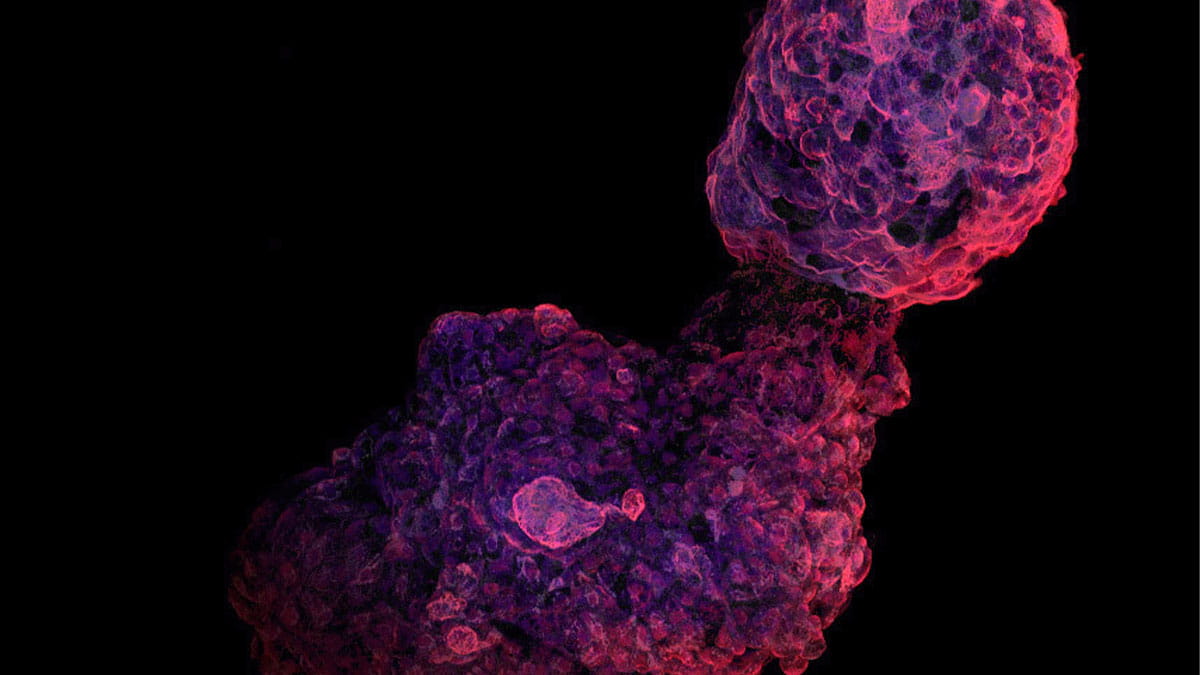College of Medicine once again recognized as top-tier medical school for research by U.S. News & World Report

The Ohio State University College of Medicine has once again been recognized among the 2025-2026 U.S. News & World Report “Best Medical Schools” list as a top medical school in the United States. For the second year in a row, U.S. News shared its “Best Medical Schools” results in a four-tier system, rather than a traditional ranking.
The Ohio State College of Medicine continues to be rated in Tier 1 for Best Medical Schools: Research, placing us among the top 16 medical schools for research in the nation. Case Western Reserve University is the only other university in Ohio rated in this tier. We also remain in Tier 2 for Best Medical Schools: Primary Care and in Ohio, the University of Cincinnati and Wright State University are also in this tier.
The “Best Medical Schools” list is intended to help prospective medical students make important decisions about where to apply to complete their medical education. Carol R. Bradford, MD, MS, FACS, dean of the Ohio State College of Medicine, credits the college’s inclusion in the top tiers of the U.S. News ratings to the commitment of clinicians, researchers and learners to translational science in academic medicine, and to the dedication of faculty and staff to developing the next generation of physician-leaders who will make impactful discoveries.
“These results are a wonderful testament to the diligent and steadfast commitment our valued team members and learners demonstrate every day to our college’s tripartite mission,” Dr. Bradford says. “The leading-edge education we provide our medical students — in an outstanding academic medicine setting — offers unparalleled opportunities for them to participate in world-class discovery and patient care. This approach guides our vision and informs our efforts to improve lives in Ohio, across the nation and around the world.”
In this year’s “Best Medical Schools for Research” list, the ranking methodology was expanded to include federal, state, local and private contracts, and a two-year average was applied. Faculty counts were also aligned with the funding year. The methodology for the “Best Medical Schools for Primary Care” list did not change.
Education
The College of Medicine community — which includes 5,000 learners, more than 4,000 staff members and over 2,700 faculty — now has access to one of the most exceptional medical education facilities in the country. Completed in the spring of 2024, the 225,000-square-foot Interdisciplinary Health Sciences Center (IHSC) and newly renovated Hamilton Hall is the college’s new home. It provides innovative, flexible facilities that are creating a collaborative campus for interprofessional education across the health sciences and strengthening the interdisciplinary curriculum at Ohio State.
The IHSC and Hamilton Hall are the newest additions to a variety of state-of-the-art facilities the College of Medicine uses across the university and The Ohio State University Wexner Medical Center to ensure learners, researchers and practitioners continue to lead scientific discoveries that will benefit communities and patients everywhere. The Pelotonia Research Center features more than 100 labs and will be home to up to 1,000 researchers and staff from several colleges. The Clinical Skills Education and Assessment Center is a comprehensive medical simulation facility that provides a safe, controlled educational environment for students, residents and other medical learners.
Another critical enhancement at the college is the creation of the Community Medicine MD Track, which enables learners to follow their passion of caring for patients in rural and smaller communities. The first cohort of the new MD program began last fall and are participating in the innovative medical education provided by the College of Medicine on the Columbus campus. In 2026, they will transition to Mercy Health – St. Rita’s Medical Center in Lima, where they will complete their final two years of medical school immersed in a community hospital setting.
“The Community Medicine MD Track not only addresses the clinical issues relevant to caring for all patients, but also the expanding health care needs of the state amid a shortage of physicians in small and rural areas,” Dr. Bradford says. “This plays a huge role in the region’s health care innovation and what makes Ohio State such a force in delivering care to everyone in need in our communities.”
Research
While much of the work at the college focuses on translational science, some of the best scientists in the world continue to explore key foundational areas. The college’s total research funding grew to $477.3 million during FY24, bolstered by multimillion-dollar grants to study traumatic brain injury (TBI), gene therapy and maternal and pediatric medication safety. Awards from the National Institutes of Health (NIH) increased to $245.2 million in the past fiscal year.
“The NIH invests most of its appropriations in research to studies that have the potential to enhance lives and reduce illness and disability,” Dr. Bradford says. “We equip our researchers, leaders and learners with the spaces, technologies and resources they need to connect with others across disciplines in order to accelerate new discoveries and transform the lives of people in Ohio and beyond.”
Clinical and community care
The college’s outstanding education and discovery efforts complement the excellent clinical services provided through the Ohio State University Wexner Medical Center.
In the past fiscal year, the Ohio State Wexner Medical Center and College of Medicine, in collaboration with several Ohio universities, launched SOAR, a first-ever, multi-generational study that will uncover the biological, psychological and social patterns related to mental health. Housed in Ohio State’s Center for Psychiatry and Resilience, the landmark study is led by clinicians and researchers at Ohio State and will help them try to identify the root cause(s) of mental illness and learn how to build resilience and reduce the risk of suicide and drug overdose.
Cardinal Health just made a $1 million gift to the research efforts of the Center for Psychiatry and Resilience in order to invest in the mental health and well-being of Ohio’s workforce. The ability to treat issues and improve the quality of life of employees and communities will help build sustainable support and encourage resilience.
Another tremendous offering for community care is the Wexner Medical Center’s Healthy Community Center, which opened in May 2024 in a remodeled former library on the east side of Columbus. In the center, experts in culinary, health, wellness and fitness programming provide community residents dietary and exercise workshops, health screenings and other educational offerings related to diabetes, cancer, heart disease and obesity.
Ohio State has also committed to leading the state of Ohio in health care expansion with a $3 billion capital investment in education, research and patient care. The way clinical care is taught, improved upon and delivered will be transformed by the creation of an 820-bed inpatient hospital tower, as well as the educational opportunities offered through two new outpatient care centers opened in the last few years.
All of these efforts equip the leaders and learners at the Ohio State College of Medicine with the spaces, technologies and resources they need to connect with others across disciplines, accelerate new discoveries and transform the lives of people in Ohio and beyond.
“It is my privilege to collaborate with my colleagues and our learners on these exciting endeavors to transform the health of our communities,” Dr. Bradford says.



